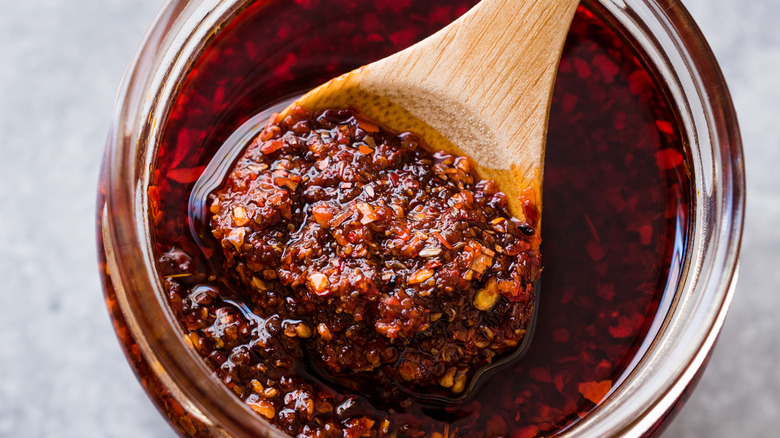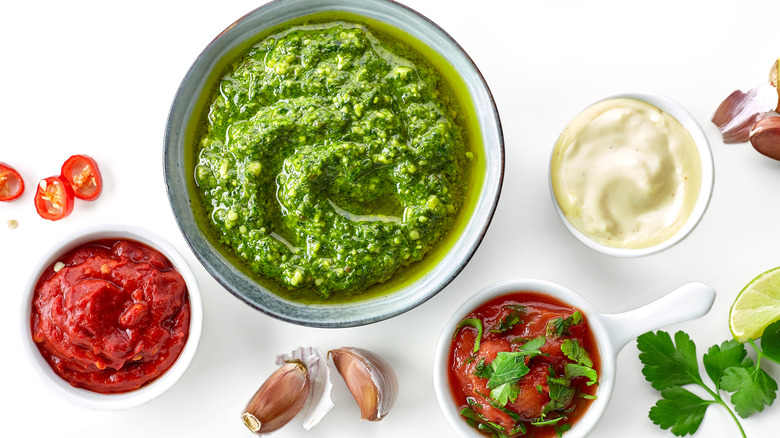The One Ingredient That Shouldn't Be In The Salsa You're Eating
Whether you are using it as a dip for chips or as a condiment that adds spice for appetizers and full dishes, nothing quite lights up a meal like a good salsa. While traditional salsa is full of healthy ingredients like tomatoes, onions, garlic, cilantro, and spicy hot chile peppers, not all salsas are created equal. Unfortunately, some salsa lovers are unwittingly ingesting unhealthy substances that, if consumed daily and in large quantities, can actually take a toll on human health.
According to How Products are Made, many commercial salsas contain additives such as sugar, salt, vegetable oil, modified food starch, and preservatives such as sodium benzoate or citric acid, the latter of which has been shown to cause allergic reactions (via Healthline). Some even use unhealthy sweeteners like dextrose, which is made from corn, and artificial colors to make it look brighter and fresher than it might actually be. How is that for taking the snazz out of a salsa? When you frequently consume too much of these commercial salsas, you are putting yourself at risk for conditions like high blood pressure, due to excess salt intake (via CDC), plus diabetes and obesity from too much added sugar (via CDC). Fortunately, you have other options.
Make sure your salsa has no unhealthy ingredients
Label reading is one of the best ways to screen your salsa for additives that you don't want and may be damaging to your health. If you are having trouble finding a salsa brand without a lot of ingredients that you can't pronounce or just simply sound like they should not be in there, try shopping for your salsa at a health food store that specializes in organic products. While fresh salsa without additives and preservatives might have a shorter shelf life and therefore a higher price point, in the long run, your body will thank you.
Another strategy is to simply learn to make your own salsa. After all, it requires no cooking at all and allows you to adjust it to your perfect spice level — somewhere between mild as a mouse and full atomic meltdown. You will also save money, as store-bought salsa is grossly overpriced and adds some serious weight to your weekly grocery bill (via Good Food). If you do a quick search, you will see that salsa recipes abound on the internet, from traditional Mexican style pico de gallo to creative innovations that tap into whatever is fresh this season — think strawberry salsa with mint and agave nectar. The best part of making your own salsa of course is that you know exactly what's in it, meaning no additives, preservatives, or artificial flavors or colors are going to be there to sabotage your flavor fiesta.


